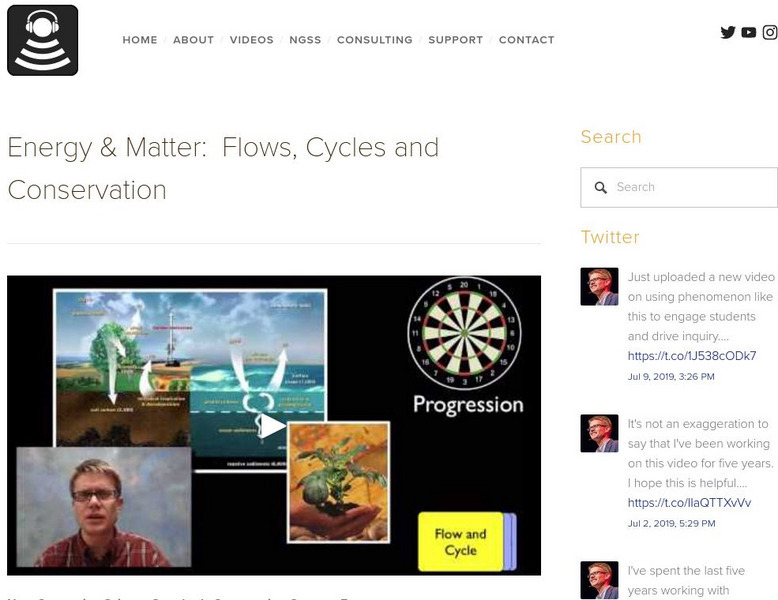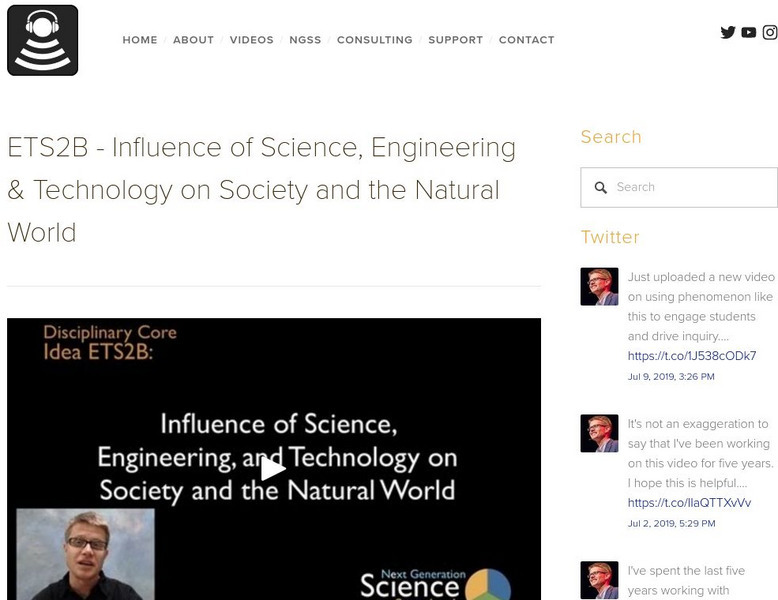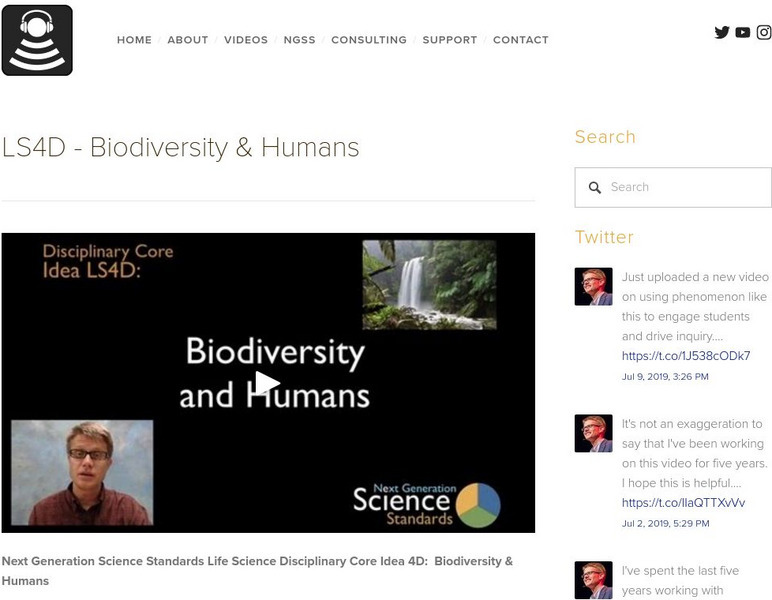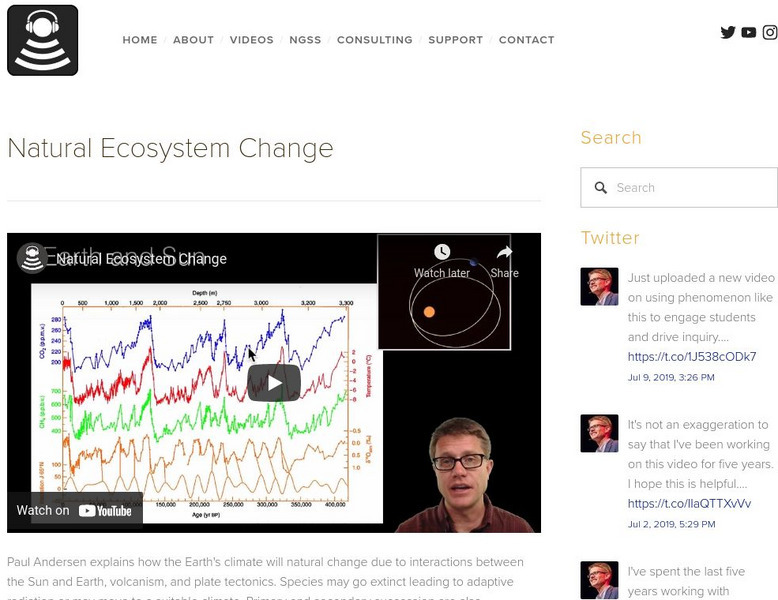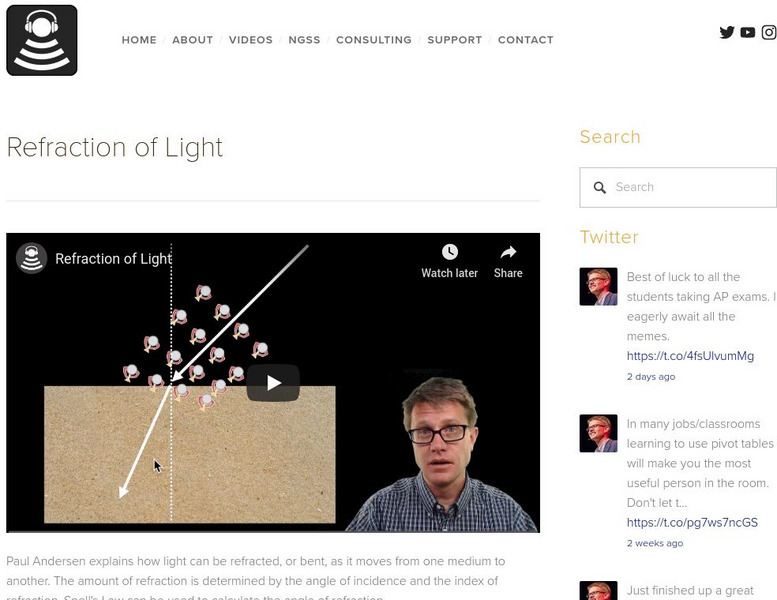Hi, what do you want to do?
Bozeman Science
Bozeman Science: Biodiversity
Paul Andersen explains the importance of biodiversity. He starts by describing how biodiversity can be species, genetic, or ecosystem diversity. He explains the importance of keystone species in an environment and gives two examples; the...
Bozeman Science
Bozeman Science: Ap Chemistry: Metallic Bonding
Explains how metallic bonding structure creates the different properties of metals. The electron sea model explains how the positive nuclei are locked into a negative sea of delocalized electrons. This sharing of electrons creates metals...
Bozeman Science
Bozeman Science: Endocrine System
Paul Andersen explains the major elements in the endocrine system. He explains how glands produce hormones which target cells. He differentiates between water-soluble and lipid-soluble hormones. He then describes the hormones and actions...
Bozeman Science
Bozeman Science: Weather & Climate
In this video, Paul Andersen describes both weather and climate. Weather refers to the day-to-day conditions on the Earth's surface, including temperature, wind, humidity, air pressure, and precipitation. Climate means the long-term...
Bozeman Science
Bozeman Science: Homeostasis Hugs
Paul Andersen explains how hugs between tissues can help maintain homeostasis. Countercurrent heat exchange allows heat to stay within the core of the body. Close contacts between the capillaries and alveoli allow our body to maintain...
Bozeman Science
Bozeman Science: Muscular System
Paul Andersen explains the three types of muscle found in humans: striated, smooth and cardiac muscle. He explains how actin and myosin interact to contract the sarcomere in a muscle. The sliding filament theory explains how ATP and...
Bozeman Science
Bozeman Science: Position vs Time Graph Part 2
Mr. Andersen shows you how to read a position vs. time graph to determine the velocity of an object. Objects that are accelerating are covered in this video. He also introduces the tangent line (or the magic pen). [13:01]
Bozeman Science
Bozeman Science: Respiratory System
Paul Andersen starts this video with a description of the respiratory surface. He explains how worms, insects, fish, and mammals take in oxygen and release carbon dioxide. He then tours the major organs of the respiratory system; from...
Bozeman Science
Bozeman Science: Stickleback Evolution
Paul Andersen describes microevolution and macroevolution in the stickleback fish of Loberg Lake. He describes how anadramous fish repopulated the lake after poisoning and adapted to the new environment through natural selection. He also...
Bozeman Science
Bozeman Science: Response to External Environments
Paul Andersen explains how organisms respond to the external environment. He begins with a discussion of behavioral responses like hibernation and migration. He ends with a discussion of physiological responses like shivering and...
Bozeman Science
Bozeman Science: Population Variation
Paul Andersen explains the importance of genetic variation within a population. He begins with a discussion of the devil facial tumor that is a form of cancer transferred between Tasmanian devils. He then explains how a decrease in...
Bozeman Science
Bozeman Science: Ap Chemistry: Coulomb's Law
In this video, Paul Andersen explains how we can use Coulomb's law to predict the structure of atoms. These predictions can be verified through the use of Photoelectron Spectroscopy (PES). [10:57]
Bozeman Science
Bozeman Science: Energy & Matter: Flows, Cycles and Conservation
Paul Andersen explains how matter and energy flow and cycle through systems. He starts by explaining how energy and matter input and output will always be conserved. He addresses the many misconceptions surround energy and matter...
Bozeman Science
Bozeman Science: Influence of Science,engineering,tech on Society, Natural World
In this video, Paul Andersen explains how society influences the natural world through increasing science, engineering, and technology. As the world population increases, it will require more natural resources and it will impact the...
Bozeman Science
Bozeman Science: Cycles of Matter & Energy Transfer in Ecosystems
Paul Andersen explains how matter moves from the environment into living organisms and back into the environment. Food webs are used to show how matter and energy move through organisms. Ecological pyramids show that matter and energy...
Bozeman Science
Bozeman Science: Natural Selection
In this video, Paul Andersen defines natural selection as differential reproductive success. He then explains how natural selection shapes organisms on our planet through variation and selection. A K-12 teaching progression is also...
Bozeman Science
Bozeman Science: Biodiversity & Humans
In this video, Paul Andersen defines biodiversity and explains the impacts humans are having on the planet's biodiversity. Humans are impacting the variety of life on our planet through habitat destruction, invasive species, pollution,...
Bozeman Science
Bozeman Science: Natural Ecosystem Change
Paul Andersen explains how the Earth's climate will natural change due to interactions between the Sun and Earth, volcanism, and plate tectonics. Species may go extinct leading to adaptive radiation or may move to a suitable climate....
Bozeman Science
Bozeman Science: Energy Consumption
Paul Andersen explains how humans have consumed energy through history and may consume energy in the future. Sources of energy have included food, animals, wood, wind, coal, oil, and natural gas. However non-renewable energy source...
Bozeman Science
Bozeman Science: Mining
Paul Andersen explains how mining is used to extract valuable minerals from the Earth's crust. Surface and subsurface mining are used to extract ore which is then processed. A discussion of ecosystem impacts and legislation is also...
Bozeman Science
Bozeman Science: Digestive System
Paul Andersen starts with a brief description of feeding methods. He then details all of the major parts within the human digestive system. This tour starts in the mouth, move down the esophagus, through the stomach, small intestine,...
Bozeman Science
Bozeman Science: Conservation of Energy and Energy Transfer
Paul Andersen explains how energy is conserved within a system. In both macroscopic and microscopic collisions, the amount of energy before the collision is equal to the amount after. He then defines heat as energy transfer between...
Bozeman Science
Bozeman Science: Physics: Refraction of Light
In this video, Paul Andersen explains how light can be refracted, or bent, as it moves from one medium to another. The amount of refraction is determined by the angle of incidence and the index of refraction. Snell's Law can be used to...
Bozeman Science
Bozeman Science: Cellular Specialization
Paul Andersen explains how cells differentiate to become tissue specific. He also explains the role of transcription factors in gene regulation. The location of a cell within the blastula ultimately determines its fate. The SrY gene is...

















